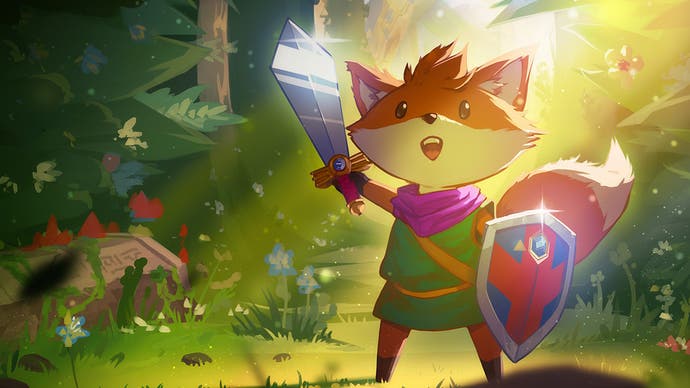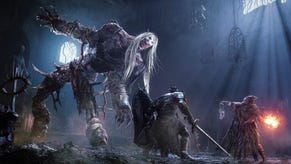Players have translated Tunic's runic language
What does the fox say?
Players have already translated the runic language in Tunic.
Throughout the game, instructions from characters, signposts, and the in-game manual are written in a made-up runic language. Players aren't required to translate it; instead it adds an air of mystery to the foxy adventure and forces players to analyse visual clues instead.
However, some eager players have begun diligently translating the runes, including Reddit user oposdeo.
Oposdeo, who works as a programmer not a linguist, has only beaten a couple of bosses in the game so far, but has managed to ascertain vowels, consonants, and grammar structure of the fictional language. Now to translate all the manual pages.
"Reading the pages usually gives lots of nice lore and flavour, as well as concrete explanations of what the pictures are hinting," oposdeo said in a comment. "You don't usually learn too much extra gameplay wise but you can definitely discover things earlier than you would otherwise, understand the game better and can find some neat secrets."
In an interview with TheGamer, the game's developer Andrew Shouldice discussed creating the language.
"[Tunic] is very much about secrets and mystery in a big way, and sort of like, truly feeling like you're surrounded by things that you don't fully understand," he said.
"The glyphs [in Tunic] exist to make the player feel like they're in a place that they don't belong, and were they to mean something, it would be important that it not simply be a letter-to-letter cipher to English.
"In this day and age, if you see a set of glyphs in a game, you are probably going to assume that it's got some sort of meaning, and maybe we'll try digging into it, and if it were merely a letter by letter cipher, that would probably be less interesting for people. The folks who have delved more deeply into [the Tunic language] seem to have had a good time sussing things out."
He adds: "There's a theme in the game, [which is] of hexagons. There's a strong [hexagonal theme] all over the place in the game, and so even the language has sort of a structural similarity to the layout."
In the Eurogamer review of Tunic, Christian said it "turns its many influences into something that feels both familiar and gloriously new".








